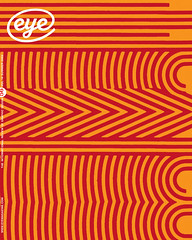Summer 2005
Typostalgie
Nostalgia for Germany’s old East has led to renewed interest in certain pre-1989 typefaces
In the German Democratic Republic (GDR), the state type foundry, VEB Typoart Dresden, was the source of all of the type design output from the 1950s until the late 1980s. The two most influential art directors at Typoart were the typographers Herbert Thannhaeuser and Albert Kapr. Under their guidance, Typoart designed a wide range of display and bookfaces based on commonly used fonts from Western foundries which were on the wrong side of the Iron Curtain. The classical restraint of these faces reveals their foundations in the traditional German book design and printing culture based around Dresden and Leipzig.
New interpretations of these traditional fonts have been developed by a younger generation of contemporary German type designers. Drescher Grotesk was revived in 1999 as FF Super Grotesk by Sven Smital of eBoy (Berlin) and Herbert Thannhaeuser’s Erler Versalien was redrawn by Andreas Seidal and renamed Missale Incana (2004). Ingo Preuß has revised Heinz Schumann’s 1964 Stentor as Rosalia (2004). The humble East German banknote inspired Sylvia Janssen to design the display face Sektor.
While it is true the ‘ostalgie’ version of the GDR retains über-hip currency among younger designers, it is the disappearance of the original symbols of a discredited way of life that underlines the continuing sense of unease in the way Germany deals with its postwar / post-Wall national identity. The loss of a public typographical culture and history might have followed from the line drawn under the recent past, but not everything has been forgotten.
FF City Street Type (2000) by Ole Schäfer and Verena Gerlach is a family of fonts based upon the distinctive and now almost disappeared street signage systems of West and East Berlin. Schäfer and Gerlach had a huge respect for the typographic standards of the Eastern designers and were inspired by signs bought in a fleamarket. The original typeface for the Eastern streetsigns was never actually designed and had to be reconstructed digitally by the designers. All kinds of material in the GDR were very rare and expensive, including metals, so in a great example of form following function, street-signs were made of a weather-resistant black and white plastic composite. The letters were then machine-carved out of the plastic to create a technical style font quite different from the 1930s style sans serif used in the Western sector of the city. Because many streets in East Berlin were named after Communist idols with double-barrelled names (e.g. Rosa-Luxemburg-Platz), the form of the letters had to be condensed to make them fit.
Grant Carruthers, graphic designer, Newcastle upon Tyne
Eye is the world’s most beautiful and collectable graphic design journal, published quarterly for professional designers, students and anyone interested in critical, informed writing about graphic design and visual culture. It is available from all good design bookshops and online at the Eye shop, where you can buy subscriptions and single issues.

